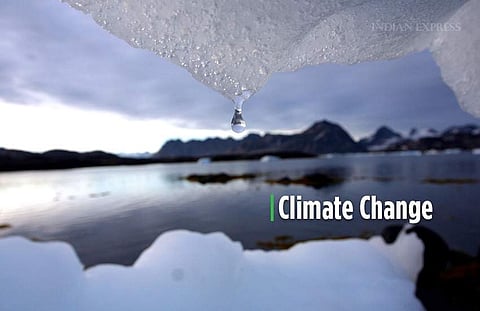

Remember the spooky lights hovering over marshes and those phantoms of our childhood tales leading solitary travellers to their death. Flickering fires on desolate stretches of lowland with haunting names like aleya in Bengali or will-o’-the-wisp in English. Elsewhere, deep in the benthic zones of oceans, an even stranger mystery—little-known tube-like creatures clustering around scars on the seafloor that are seeping gas from the earth’s depths. What connects these? Methane.
The hydrocarbon that powers CNG vehicles, bubbles out of ocean floor seeps and catches fire over marshes, leading the lonely traveller astray, is a sleeping giant of the climate soup in which our world is sinking deeper each day. As a greenhouse gas, it is about 80 times more powerful than carbon-dioxide over a 20 year time horizon. Add to this a warming Arctic and you get the increasing possibility of unmanageable levels of this compound escaping into the atmosphere from land-bound and submarine sources.
Scientists using data from methane-sensing satellites among other instruments are finding growing concentrations of atmospheric methane released by oil and gas extraction, agriculture, waste management, land use, burning of biomass and other activities. In the last two centuries, the amount of this powerful greenhouse gas in the atmosphere has more than doubled but from 2007 onwards it has been rising fast. The jury is still out as to what’s causing this.
Recently, The Guardian reported that the Russian research ship R/V Akademik Keldysh trawling the icy wastes of the Arctic discovered methane bubbling up from the continental slope of the eastern Siberian coast. The article commented how this fuels concerns that a climate feedback loop may have been triggered. A positive feedback loop occurs when parts of the output of a system feeds its input thus reinforcing the overall effect, in this case global warming. Simply put, (if) the undersea methane release is connected to warming, this would mean more of it (could) end up in the atmosphere, leading to more warming and more release.
While a review of The Guardian article by scientists for climatefeedback.org flagged it for ‘sensational claims’, this is no cause to celebrate. Although seabed methane release has not been extensively studied, its potential for complicating climate change projections are definite. This is more reason for cutting conventional emissions and being aware of processes that could accelerate methane release.
We know that global warming is already resulting in methane discharge from land-based permafrost in the Arctic, a region that has been warming two-times faster than the world average. Similarly, warmer ocean currents could be destabilising the submarine methane hydrate or clathrate deposits, a veritable dark horse in the climate endgame.
The story of methane and its possible connections with the past, present and future of the earth is packed with intrigue. Deep underneath the waters of our blue planet are humongous stores of energy locked in ice-like cages which catch fire on contact with a flame and which along with methane-producing microbes could hold the key to the 250-million-year-old Permian-Triassic extinction event. ‘Some say the world will end in fire, Some say in ice,’ wrote Robert Frost and he comes to our minds when we see how these enigmatic ice-lockers known as methane clathrate or ‘fiery ice’ could well spell doom yet again.
Still human hunger for energy is more powerful than the darkest nightmare. Countries like China, Japan, Canada and the US are already in various stages of experimental mining of the undersea methane clathrate as an abundant store of energy. Leave alone the feedback loop of Arctic methane-venting into the atmosphere, in worst case scenarios, these mining ventures could trigger submarine mudslides, tsunamis, besides runaway planetary heating.
Literature brings such scenarios to life, steeling our resolve to fight for the planet. English author, Liz Jensen’s climate change novel The Rapture (2007) is plotted around a clathrate mining accident which triggers catastrophic events on a continental scale. I asked her about the findings of the Russian research ship in the Arctic. Acknowledging the need to wait for further scientific reports to come in from that region, Jensen said, ‘the most recent preliminary findings are cause for deep concern.
If Arctic methane hydrate destabilisation has indeed begun, an irreversible process has already been triggered. In that case I fear there’s no escaping the world hitting four degrees in the lifetime of any baby born today’. Under the Arctic ice lurks more sinister threats, but that story is for another day.
Rajat Chaudhuri rajat@rajatchaudhuri.net
Writer and climate activist